Integrated design
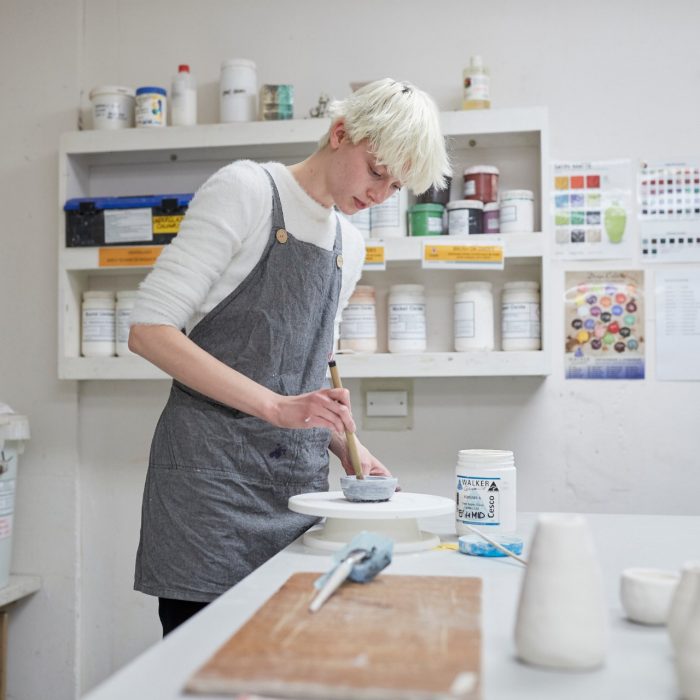
What is integrated design?
Integrated design is a unique specialisation that takes an interdisciplinary approach to solving design challenges. It equips students with valuable knowledge and skills across multiple design disciplines, such as graphic design, textiles and 3D visualisation. Traditionally, where a project may have required expertise from various subject matter experts, integrated designers are able to consider multiple perspectives and elements simultaneously to fast-track the design process.
Integrated designers develop deep knowledge of how historical, social, cultural and technological values influence design. They learn to consider the impact of certain design choices on people, communities and the environment and are encouraged to use this knowledge to create a more inclusive, sustainable world.
Explore the integrated design disciplines we offer at UNSW.

Graphics
Graphic design is the art of developing effective and inspiring visual communications. You’ll develop a tool kit of skills including typography, image making, colour and design systems. Graphic designers apply creative thinking to design everything from brand identities and product packaging to print and digital publications and 3D spaces. Throughout your studies, you’ll develop a portfolio that demonstrates your unique style as a designer. Notable projects from past students include mobile apps, games and campaign assets.
See examples of graduate graphic design works in the A&D Annual.
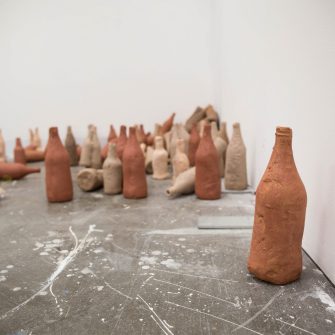
Object
Object design works with different materials to create physical items. The discipline spans jewellery, furniture, ceramic design and more. Foundational hands-on classes allow you to explore materials before moving on to digital prototypes with 3D printing and cast designs. You’ll also understand how object design gives people opportunities for social and meaningful interactions. A standout project was ‘Loveisier’ by Bachelor of Design student Justin Kong, a biodegradable jewellery line that incorporates the cremated ashes of pets who have passed away.

Textiles
Textiles can be found in almost all areas of our lives, whether it’s fashion, interior, exterior or product contexts. You'll explore creative approaches to making different materials with a focus on sustainability. Explore different textile-making traditions and contemporary technologies to develop your own progressive style. You’ll also learn how to respond to professional design briefs responsibly, ethically and with cultural acknowledgement. Past students have created bespoke textiles for clothing, art and furniture.

Experience
Experience designers transform spaces for people, curating the environment to evoke different emotions and human responses. They draw on human-centred design principles to create everything from marketing activations and art exhibitions to permanent physical spaces. You'll experiment with a range of design methods, materials and modelling to design evocative experiences that surprise, delight and engage participants. Past student Maxine Booker explores the impact and potential solution for overstimulation in public spaces in their work, ‘In(visible) De-generation’.
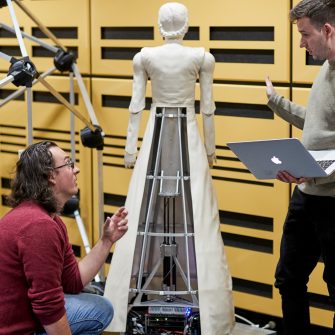
Interaction
Interaction design is all about creating immersive experiences through products, digital environments and systems. You’ll explore technologies such as voice assistants, robots and mixed reality – from interactive Snapchat filters to virtual working hubs. Throughout the program, you’ll learn about User Experience (UX) fundamentals in web and mobile, testing your designs for efficacy and viability and exploring potential use cases for this technology beyond entertainment. For example, past student Lara Laas used her interaction design skills to create an app to improve the developmental outcomes of children attending play therapy sessions.
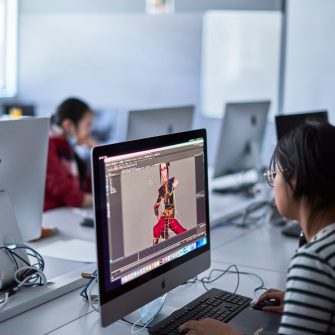
3D Visualisation
Immerse yourself in 3D technologies including real-time (gaming) systems and virtual environments. Learn how to create objects and environments, and eventually create a sophisticated 3D world. You’ll learn through live, hands-on use of key technologies and develop skills to conceptualise through design thinking. Build the theoretical knowledge for high-level art direction while trying your hand at 3D modelling, CGI lighting and rendering. For a look at what’s involved, check out Sammy Kyung’s spectacular virtual environments or Matthew Chiu Lo’s Art Deco-inspired lightsaber.
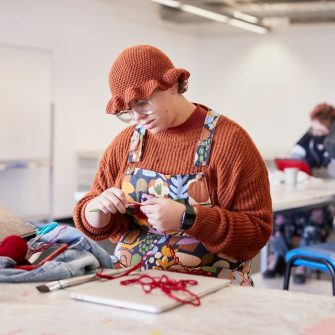
Fashion
Experiment with creative styles, ideas and cultural influences to develop your unique style in fashion design. You’ll balance theory with practical skill-building, learning the full process of garment creation from design to prototyping. This program has a strong focus on sustainable fashion and its role within the circular economy. It encourages students to examine the contemporary fashion industry and forge an environmentally and socially responsible way forward. For example, Natasha Rodriguez-Hunter’s project ‘Bespoke Footwear’ explores the potential for upcycling discarded fast fashion as tailor-made footwear to reduce textile wastage.
Why study integrated design at UNSW?
Integrated design at UNSW is a studio-based and research-led university experience. You’ll develop skills in concept development, making, critical thinking, technology, research and management, leading you to a diverse range of careers.
As part of a passionate, driven and connected community at UNSW Arts, Design & Architecture, you’ll combine creativity, entrepreneurship and innovation with the ethical, environmental and cultural responsibilities you have as a designer. You’ll put theory into practice by applying critical thinking and design methodologies to a range of professional experiences, including potential internships here in Australia and overseas.
You’ll have the opportunity to develop your skills individually and as part of multidisciplinary teams. You’ll collaborate with students from varied disciplines on complex design projects to prepare you for work after graduation. This approach mimics the way integrated designers tackle real-world projects that often require working with multiple stakeholders across different industries and settings.
Careers in integrated design
As an integrated designer, you’ll use creative thinking to lead positive change across a range of industries. Your innovative nature, problem-solving skills and technological capability will be highly sought-after by employers.
Studying integrated design exposes you to myriad career pathways, and with your multidisciplinary skillset, you’ll find opportunities to flex between industries and applications. Throughout your studies, you’ll have the opportunity to take on Work Integrated Learning (WIL) to explore different career pathways. You’ll be connected with one of UNSW Arts, Design and Architecture’s many industry partners and get a taste of the industry while you study. This hands-on experience will prepare you for a smooth transition into professional practice upon graduation.
Here are some examples of jobs in integrated design:
-
- Graphic Designer
- Illustrator
- User Experience (UX) Designer
- Object Designer
- Textile Designer
- Jewellery Designer
- Animator
- Industrial and Product Designer
- Service Designer
- Lighting Designer
- Exhibition and Event Designer
- Design Critic or Theorist
-
- Digital Marketer
- Digital Media Producer
- Social Media Creator
- Advertising Creative
- Visual Communicator
-
- Web Designer
- System Designer
- Digital Fabrication Designer
- User Interface Designer
- Game Development Specialist
- App Designer
- Virtual Reality Designer
- 3D Visualisation Specialist
Study
-
We offer the below undergraduate courses with a specialisation in integrated design:
- Bachelor of Design
- Bachelor of Design / Education (Secondary)
- Bachelor of Design / Media
- Bachelor of Commerce / Design
In addition to the above courses, we offer the below undergraduate single degrees with a minor in integrated design:
-
Honours is an extra year of study that offers you a chance to develop your research and professional skills guided by staff who are passionate about research and the development of new researchers.
-
You can develop further expertise in design through the following postgraduate programs
- Graduate Certificate in Design
- Graduate Diploma in Design
- Master of Design
- Graduate certificate in Visualisation, Simulation & Immersive Design
- Master of Visualisation, Simulation & Immersive Design
Design is a key component in a range of postgraduate programs, including the Master of Architecture, the Master of City Planning, and the Master of Landscape Architecture. For the full list of opportunities, search ‘design’ in our Degree Finder.
-
Postgraduate research through a PhD or Master of Philosophy (MPhil) will deepen your expertise and help you develop a broad intellectual sophistication, research, and professional skills that are prized by employers. You’ll have access to first-rate facilities and world-class supervisors at the forefront of their fields in fine arts. Find out more.
